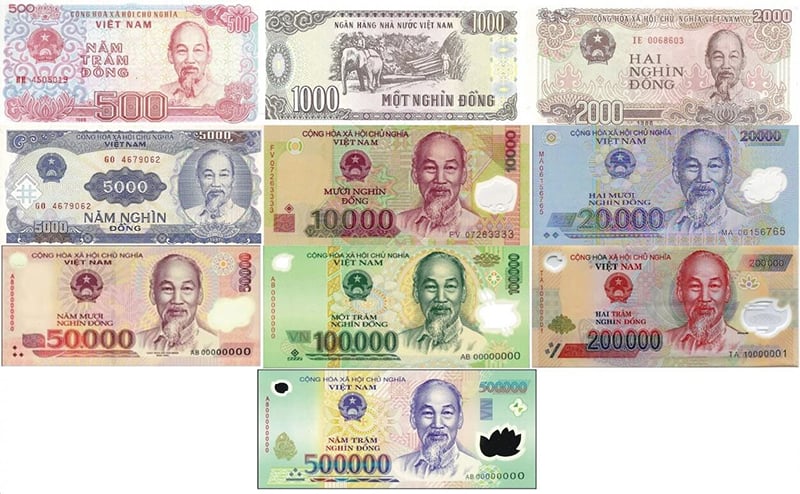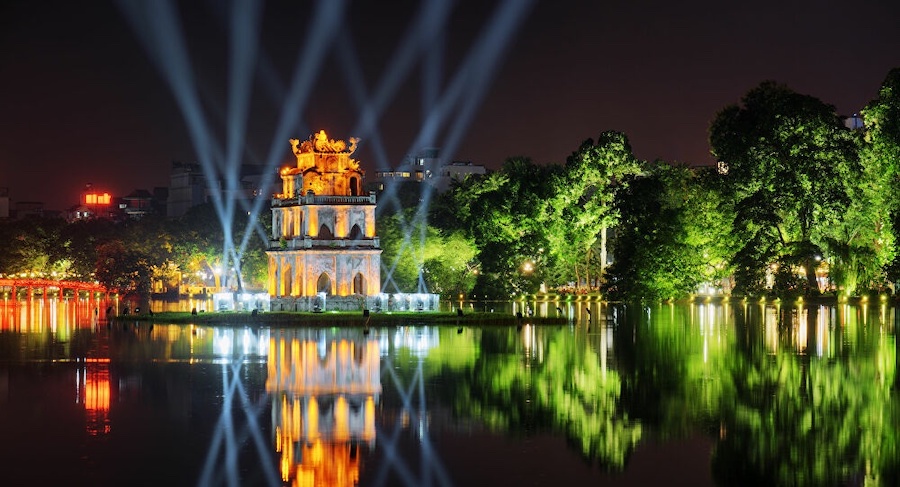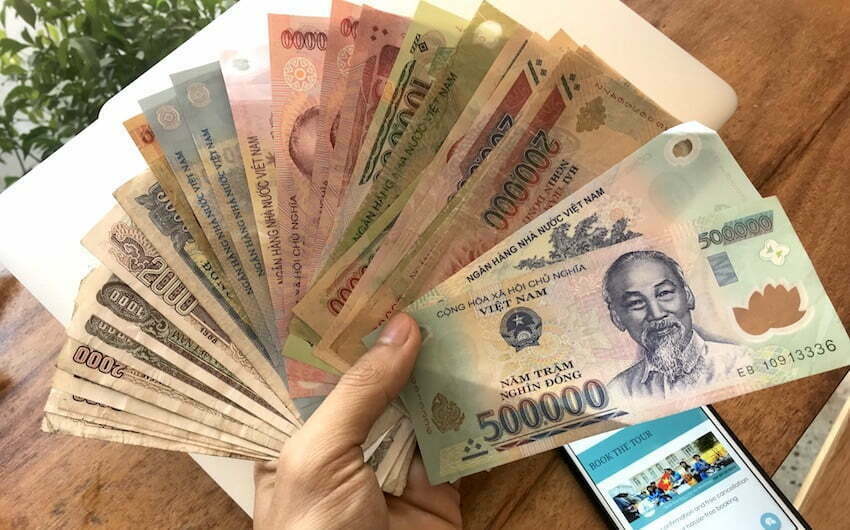The Ao Dai is more than just a piece of clothing; it is the embodiment of Vietnam’s soul, a flowing symbol of grace and tradition that has transcended centuries. As Vietnam’s national dress, the Ao Dai holds a revered place in the hearts of Vietnamese people and continues to captivate the world with its unique blend of simplicity and sophistication. The modern Ao Dai, recognizable by its long tunic with high slits on both sides worn over loose-fitting trousers, epitomizes an elegant silhouette that flatters the human form while preserving modesty, a core value in Vietnamese culture. (more…)
Category: Blog
How to Find Cheap Flights for Your Next Journey Using Airscanner
Traveling to new destinations is an exciting experience, but if you’re among the travelers, getting cheap fares will be one of the biggest challenges to you. The cost of airline tickets constitutes a significant portion of your expenses for the trip but you have the ability to minimize the expense with the correct strategy and resource and tools in hand. One such ideal tool to get cheap tickets would be Airscanner, a flight finder that aggregates fares from numerous airlines and bookers. You can get the best deals if you’re going to be flying domestically or globally with the aid of Airscanner. (more…)
Geography-based Wordle: The Ultimate Game for Travelers and Geography Enthusiasts
In the age of online puzzles and brain teasers, Wordle has emerged as one of the most popular daily games for people of all ages. Its simple yet addictive format, where players guess a five-letter word in six attempts based on color-coded clues, has captivated millions. But for those who crave a little more adventure and a challenge that combines both knowledge and fun, there’s a new twist on the classic: Worldle.
Worldle is the geography-inspired cousin of Wordle, designed for travelers, geography buffs, and anyone who loves exploring the world from the comfort of their screens. This game takes the same principles of Wordle but replaces the word-based clues with geographic features, making it an excellent alternative for those seeking to stretch their minds and test their knowledge of global locations. (more…)
The Complete Guide to Tipping in Vietnam
Being a tour guide and trip leader for the last 12 years, I see that one of the most confusing things for visitors to Vietnam is figuring out the tipping custom. Unlike the United States and other Western countries where tips are expected and considered part of the wages paid, in Vietnam, the tip is not a part of the culture, wherever you drink or eat. However, in the past decade, it’s become common to leave a tip when you are pleased with the services provided and to leave extra after a drink or meal as a gesture of appreciation. (more…)
How to Make Incense Sticks
From ancient times until now, each incense stick has become a beautiful cultural feature of the Vietnamese people. Have you ever wondered how incense is made? What ingredients are used, and is the process of producing incense simple or complex? Read the article below to answer these questions! (more…)
Vietnam War
For years after the war, people still kept the question of what was the war about, how was it started, and who was who. The nature of the Vietnam War then remains complicated to many, depending on different sides and perspectives. But to me, it can be seen like this:
To the US and South Vietnam governments, this is a war between two ideologies: Communism and capitalism. The US came and fought the war in order to stop the communist expansion in Southeast Asia. The American public ideas remained divided; one side believed in the government and supported the war against the communists in Vietnam, while the other saw it as an invasion and protested what the US was doing in Vietnam. To most Americans, their government came to Vietnam for the interests of American corporate capitalism.
To the Democratic Republic of Vietnam and the National Liberation Front of South Vietnam, it was the war for national independence, national unification, and building socialism. Vietnamese, in both North and South, do not care about political ideology; they just want peace to be doing. (more…)
Vietnam: The Indochine Style
Though Indochine Francais was officially formed in 1887, the Treaty of Saigon started the French colonization in Vietnam from 1862 to 1945. During 83 years of its colonization, the French imposed significant political and cultural changes on Vietnamese society. Vietnam fell under French influence in many aspects of its culture, including architecture, cuisine, religion, fashion, and art. Even after the first and second Indochina wars, those influences remained and were known as the Indochine style. (more…)
Modern Hanoi The Totally New Look
Whenever we talk about Hanoi, we often talk about the over 1000 years of history. Hanoi has been known as an old capital city of Vietnam with its ancient values and standards. We often talk about the Old Quarter, the French architecture, and the long cultural lifestyle… of the Hanoian people.
But here in this post, I’m going to show you a totally new look at Hanoi: the modern look of Hanoi by night. It is going to be about modern Hanoi, the skyscrapers, new buildings, and new architecture. A picture says a thousand words. Here is a series of pictures of modern Hanoi looked at from above, in the night. All pictures are taken and credited by my friends in Hanoi’s Panorama and Skyline group.
An absolutely new look of the modern Hanoi by pictures

Hanoi is now growing to the skies. We have been extending Hanoi both vertically and horizontally. This is Kengnam Tower- the highest skyscraper in Hanoi so far. More and more of these kinds of buildings are on the way. This is a good solution for the lack of houses and apartments in the developing modern Hanoi.

A big contrast of the old and the new, the highs and the lows. I see here a dynamic modern Hanoi, a growing-up city. Yes, it is developing, and developing fast. There are around 10 million people in Hanoi and they all need shelter. Apartments are being built in great quantity to supply shelters for the huge population of modern Hanoi.

I bet you cannot tell this is Hanoi just by looking at the picture. This looks like a developed city somewhere in the Western world. See that crane? Yes, more modern Hanoi’s buildings are coming. This is Hanoi’s Lotte Tower- a shopping mall, office, and apartment building that looks from the West Lake.

Tourism in Hanoi and in Vietnam has been increasing a great deal. More and more people from the world know about Vietnam and want to visit this remote corner of the world. And to welcome you all many new hotels are being built in Hanoi. This is the brand new J.W Marriot hotel, a 5-star hotel built in the new area of Hanoi.

Looking for the combination between the old and the new? Here is a picture of the Hanoi Intercontinental West Lake. It is located in the legendary West Lake with a modern structure. Stay in comfort but feel the tradition!

And to welcome travelers from the world we built this brand new Nhat Tan bridge. This was built at the same time as the new Hanoi International Airport and Vo Nguyen Giap High way. This helps travelers to travel faster and much more convenient to modern Hanoi.

Back to something traditional? Here is a rare picture of Ho Chi Minh mausoleum in the night. And you can see clearly the Parliament House right in the front. In this area, no high buildings are allowed as concern of security.

You have probably walked many times around this lake. But I bet it is a surprise to know this is the famous Hoan Kiem Lake- the very center of Hanoi. This is also a height-restricted area. Skyscrapers are not allowed to be built around here. That is a very good idea to keep the traditional and historical area of Hanoi capital city. Together with the modern Hanoi, we have to keep our core value as a 1000-year city.

Another modern Hanoi look. This is Thanh Nien Road separating the West Lake and Truc Bach Lake. This is a favorite road for lovers to hang out in the late afternoon and the sunset over the lakes is stunning. The West Lake is also a living area for the wealthy in Hanoi.
Those above are some pictures of the modern Hanoi. I bet it is a nice surprise for you to see Hanoi this different. I hope to have a chance to take you all to these places mentioned above. Then you can compare the traditional Hanoi and the modern Hanoi.
Vietnam Money And How Not to Get Confused
Vietnamese official currency is the Dong (VND). But other foreign currencies, preferably the US dollar are well-accepted nationwide, especially in big cities and major tourist destinations. Unless you pay by card, paying with your home currency in cash is a more expensive way, as the exchange rate will be converted to the vendor’s own rate. When you are agreeing with prices in shops or restaurants, always use VND to avoid trouble about the exchange rate that may happen. Some places use the official exchange rate but some try to use their own. So make sure you have some Vietnam dongs with you. And no need to change all your monies into VND and take them along with you. ATM machines and exchange bureaus are everywhere.

Vietnam money and how not to get confused
At the time of writing 1 USD trades approximately 25,200 dongs. I know that the heck of many zeros! And I’m afraid you have to get used to it well during your time in Vietnam. But look! You’ll become a millionaire instantly right when you change some money into Vietnam money. Make sure you include that in postcards sent home. This is the table of how much approximately popular currencies convert into dongs. (June 2024)

To check out how much is the exchange rate of the day you can visit the official website of Vietcombank here. Or use apps on your smartphones which are now really popular.
If you are going to change some of your home currency into VND at banks, please make sure those notes are clean, undamaged, and not too badly creasy with NO writing of all types on them. The most important is, that if the banks can spot out some fake money, they will evict it under all circumstances.
Visa and Master cards are well accepted in almost all hotels, boats, restaurants, and shopping malls in every big city of Vietnam. They usually ask for a surcharge of 3% for Visa and Master cards, and 4% for American Express. When using your cards to pay, make sure you witness the whole process and not letting the cards out of your sight. I’ve got clients who visited Vietnam coming back home to know that they’ve had their money stolen from their cards. Also, make sure you inform your banks that you are traveling to Vietnam. So they won’t block your cards when abnormal usage of cards is suspected.
And NEVER ever fall for offer to change your money to Vietnam money by some “really good exchange rate” people on the street. There is a big chance of scams like fake money or even snatching it from you and running. Always do it at banks, official exchange bureaus, or your hotels.
Also, try not to change or withdraw too much money at a time. Depending on the type of your cards you can withdraw a maximum of 20 million dongs a day. And at one process you can withdraw a maximum of 2 million dongs. The largest value of one note is 500,000 dongs being roughly about 23 USD or 20EUR. Here is the list of notes and how much value in some popular currencies. You can print this out and consult it quickly when in need.

And there are also 5,000- 2,000- 1,000- 500 dong notes but they are too small to mention. Just forget about it. Wait, they can become handy when you go to public toilets. Public toilets will charge you 2,000/time/person. Better keep those small notes.
All the above notes come in all colors and sizes. And some of them look quite familiar with only a careless glance. The 200,000 note looks like the 50,000 note. Take a good look when you receive Vietnam money change from vendors.
There are also coins of 5,000- 2,000-1,000-500-200 but they are no longer in use. If you happen to have some Vietnam coins then take them home as souvenirs. No vendors will accept them anymore.
When you are finishing your Vietnam trip make sure you spend up all the Vietnam money you have. As when out of Vietnam the VND will not be accepted, except some very few places in Cambodia and Laos. And it is next to impossible to convert dongs into dollars or any other currencies. Some places like travel agencies could do it for you but not at the rate you expect. So better calculate the Vietnam money you need and only change/withdraw some at a time. Again do not change all your cash into Vietnam money at once.
New Year Rituals in Vietnam
Lunar New Year or Tet is the biggest festival of the year. All business stops and people have at least 4 days off to come back home joining their families to celebrate. It’s the time of family reunion, visiting friends and of course good food and lots of drinks.
But Tet is not only for visiting our relations and drinking. It is also the time for many interesting activities that are believed to bring good luck for the New Year. Here are some of the traditional rituals that Vietnamese people (mostly in the Northern part) do during Tet.
Visiting pagodas in the early days of the New Year
Vietnam is a Buddhist country almost half of the nation are Buddhist believers ( or those who think they are Buddhists). Visiting pagodas at the beginning of the New Year has become an important part of one’s spiritual life. Vietnamese Buddhists go to pagodas the year-round. But they tend to do it more at the beginning of the year. Tet is the sign of a new time, new hopes, and new desires for everyone. Thus Buddhists visit pagodas with many wishes for happiness, success, and peace.
Vietnamese people believe that visiting pagodas in the early days of New Year is not only for wishes but also for one to merge into a religious atmosphere and to leave the hardship of life behind. Going into a pagoda and smelling the incense will ease our pains and help to build serenity.
When visiting pagodas, Buddhists often bring flowers, fruits, or sweets as offerings with a strong belief that to give is to receive. They also put money into donation boxes or leave money around the atlas. While giving an offering is absolutely fine, leaving money everywhere in the pagoda is considered to be inappropriate. It’s against Buddha’s words of a simple life without any material desires. But sadly this problem tends to increase these days.
Giving out lucky money
When I was a little boy I counted every single day until the New Year. As I would have lucky money from people around then I could my sweet and toys. During the New Year, Vietnamese people give old people and children lucky money in red envelopes, with the wish that old people will have good health and young kids will grow fast. This is a nice tradition that has been kept for many years. When you start to have red envelopes for New Year, that’s a sign people think you are old (and respectable). But when kids grow up enough they will stop to receive money from everyone.
Picking some green buds
Nothing can grow as strongly as trees. When spring comes, all plants on earth grow buds which is a sign of new life and strength. Based on that, Vietnamese people often pick some green buds from some trees around the house or at the local pagoda with the hope that people can have strong growth of trees. They would pick any small branch that they first saw, bring that home, and place it on the altar. Banyan, fig, and acacia…are believed to be the good picks that bring good luck to the family. Meanwhile, green buds from pine trees, daisy, bamboo, and Ochna are believed to bring happiness, good health, and joy to the family.
In the past, those green buds had to be picked from trees in the local pagoda’s garden. Now it is a lot more flexible in thoughts that they can just pick it from any trees nearby. Some families even but sugarcane or some small green bonsai trees so they can avoid picking branches from trees. These green buds are kept until the last day of the New Year and they will be burnt with the votive papers.
Receiving lucky calligraphy from an old master
In the past, old masters were those who studied a lot and had respectable knowledge but didn’t work for the kings. At the New Year, Vietnamese people came to those old masters and asked for some lucky calligraphy written carefully and beautifully on “Gió” paper. This nice tradition reflects the respect of education and its ambassadors- teachers or masters of Vietnamese people.
Recently, this tradition is coming back. During the New Year, many Hanoi people go to the Temple of Literature and the space near Ho Giam ( Giam Lake in front of Van Mieu ) to ask for lucky calligraphy. There are writing stalls with masters (sometimes not very old) willing to write any kind of good words that are asked. In the past this activity was free but nowadays people are expected to pay some money for the words to be written. Common words are the things that they wish for New Year like Happiness, Luck, Success, and Peace…or words to remind them to work harder or to be a better person like Patient, Strong, Faithful…
- 1
- 2










